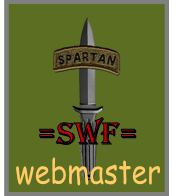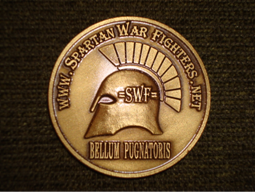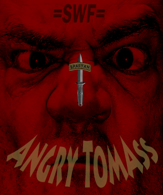Post by swfwebmaster on Jun 23, 2008 20:02:39 GMT 1
The “Challenge Coin” originated in Europe during World War I where it was carried by American soldiers. During the war, an American aircraft was shot down behind enemy lines and the pilot was captured by German soldiers. They took most of what he possessed, but failed to detect his challenge coin.
On his way to a permanent prisoner of war facility, he was held in a small French village by his German captures near the front lines. During the night, the town was struck by British artillery creating enough confusion to allow the pilot to escape. The pilot found some civilian clothes and made the decision to use them to improve his chances of getting through German controlled areas and back to friendly forces.
With great difficulty, he snuck across no-man’s land and finally made contact with a French patrol. Unfortunately for him, the French had been on the lookout for German saboteurs and spies dressed as civilians. The pilot was caught in a bad position because all his forms of identification were previously confiscated by the Germans. The French immediately prepared him for execution.
Desperate to prove his allied status, he offered his challenge coin as evidence of his origin to his new French captors. One of the French soldiers recognized the unit insignia on the coin and the pilot’s execution was delayed to confirm his identity.
When the pilot returned to his unit and was able to tell his near-death story, it became common for soldiers to carry their unit coin. It also became common practice for soldiers to challenge each other to produce the unit coin to ensure it was carried all the times.
A challenged soldier was required to buy a drink for the challenger if he could not produce the coin. On the other hand, the challenger was obligated to purchase a drink if the challenged soldier could produce the coin.
The tradition of the challenge coin is carried on to this day by modern military units. A challenge coin bears the organization’s emblem and is carried by all members of the organization. They are carried to prove membership, to show pride in being part of the organization, and to enhance morale.
The challenge can be held anytime and anywhere. It does, however, usually take place in a bar/pub. There are many manners in which to conduct the challenge and it often begins with the challenger slapping his coin on the bar. Another popular way to conduct the challenge is to "accidentally" drop the coin and everyone’s attention is gathered as they hear the distinct sound of the metal coin hitting and then coming to rest on the hard floor.
When this blessed event occurs, all unit members must immediately produce their organizational coin. All personnel failing to produce their coveted coin must buy a round of drinks for all unit members who are able to produce theirs. The bold challenger does however take risk in this venture. If everyone is able to produce their coin, the challenger must buy a round of drinks for the whole group. The odds are in favor of the challenger for there is usually an unprepared member who will pick up the tab.
On his way to a permanent prisoner of war facility, he was held in a small French village by his German captures near the front lines. During the night, the town was struck by British artillery creating enough confusion to allow the pilot to escape. The pilot found some civilian clothes and made the decision to use them to improve his chances of getting through German controlled areas and back to friendly forces.
With great difficulty, he snuck across no-man’s land and finally made contact with a French patrol. Unfortunately for him, the French had been on the lookout for German saboteurs and spies dressed as civilians. The pilot was caught in a bad position because all his forms of identification were previously confiscated by the Germans. The French immediately prepared him for execution.
Desperate to prove his allied status, he offered his challenge coin as evidence of his origin to his new French captors. One of the French soldiers recognized the unit insignia on the coin and the pilot’s execution was delayed to confirm his identity.
When the pilot returned to his unit and was able to tell his near-death story, it became common for soldiers to carry their unit coin. It also became common practice for soldiers to challenge each other to produce the unit coin to ensure it was carried all the times.
A challenged soldier was required to buy a drink for the challenger if he could not produce the coin. On the other hand, the challenger was obligated to purchase a drink if the challenged soldier could produce the coin.
The tradition of the challenge coin is carried on to this day by modern military units. A challenge coin bears the organization’s emblem and is carried by all members of the organization. They are carried to prove membership, to show pride in being part of the organization, and to enhance morale.
The challenge can be held anytime and anywhere. It does, however, usually take place in a bar/pub. There are many manners in which to conduct the challenge and it often begins with the challenger slapping his coin on the bar. Another popular way to conduct the challenge is to "accidentally" drop the coin and everyone’s attention is gathered as they hear the distinct sound of the metal coin hitting and then coming to rest on the hard floor.
When this blessed event occurs, all unit members must immediately produce their organizational coin. All personnel failing to produce their coveted coin must buy a round of drinks for all unit members who are able to produce theirs. The bold challenger does however take risk in this venture. If everyone is able to produce their coin, the challenger must buy a round of drinks for the whole group. The odds are in favor of the challenger for there is usually an unprepared member who will pick up the tab.







